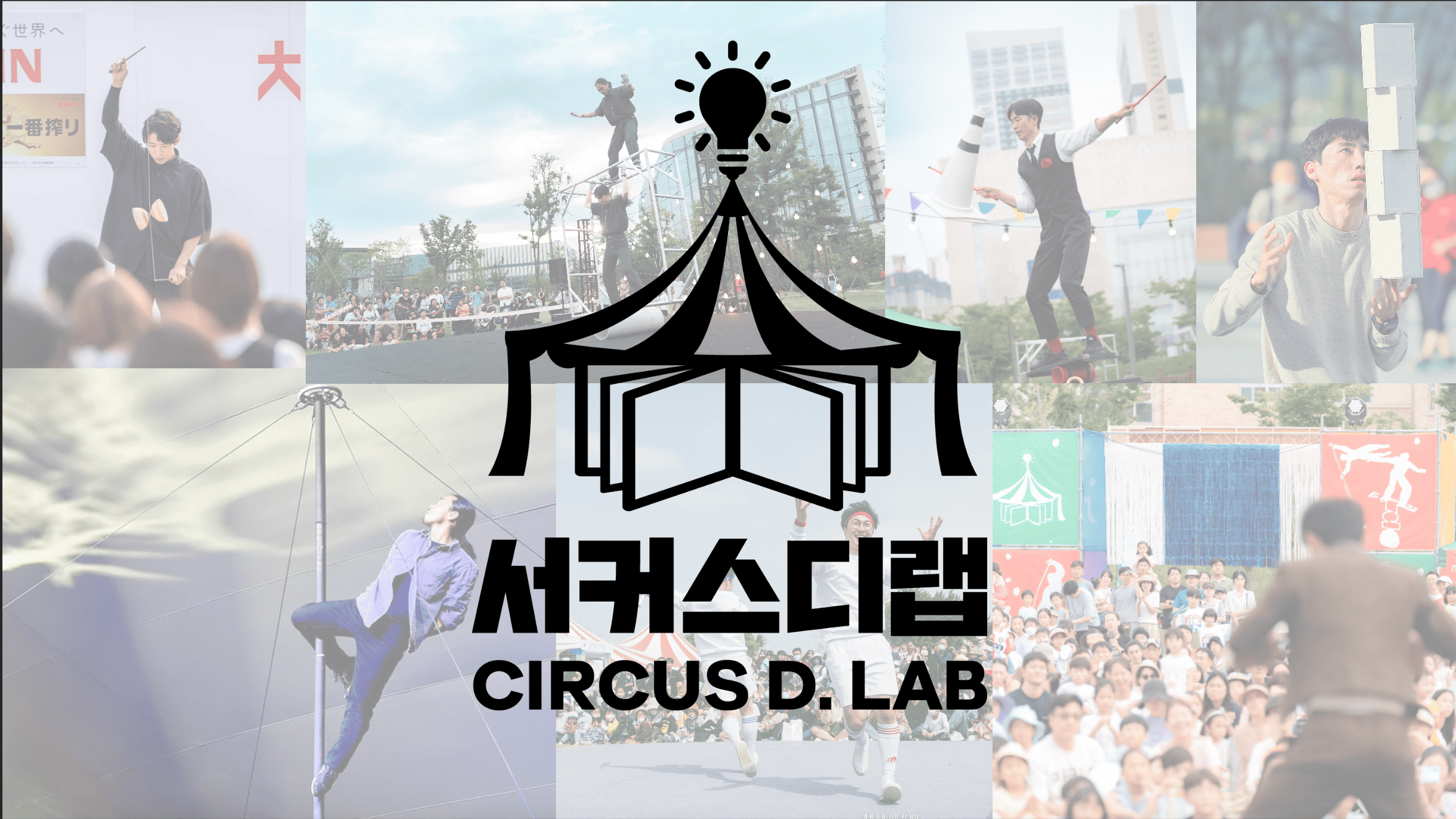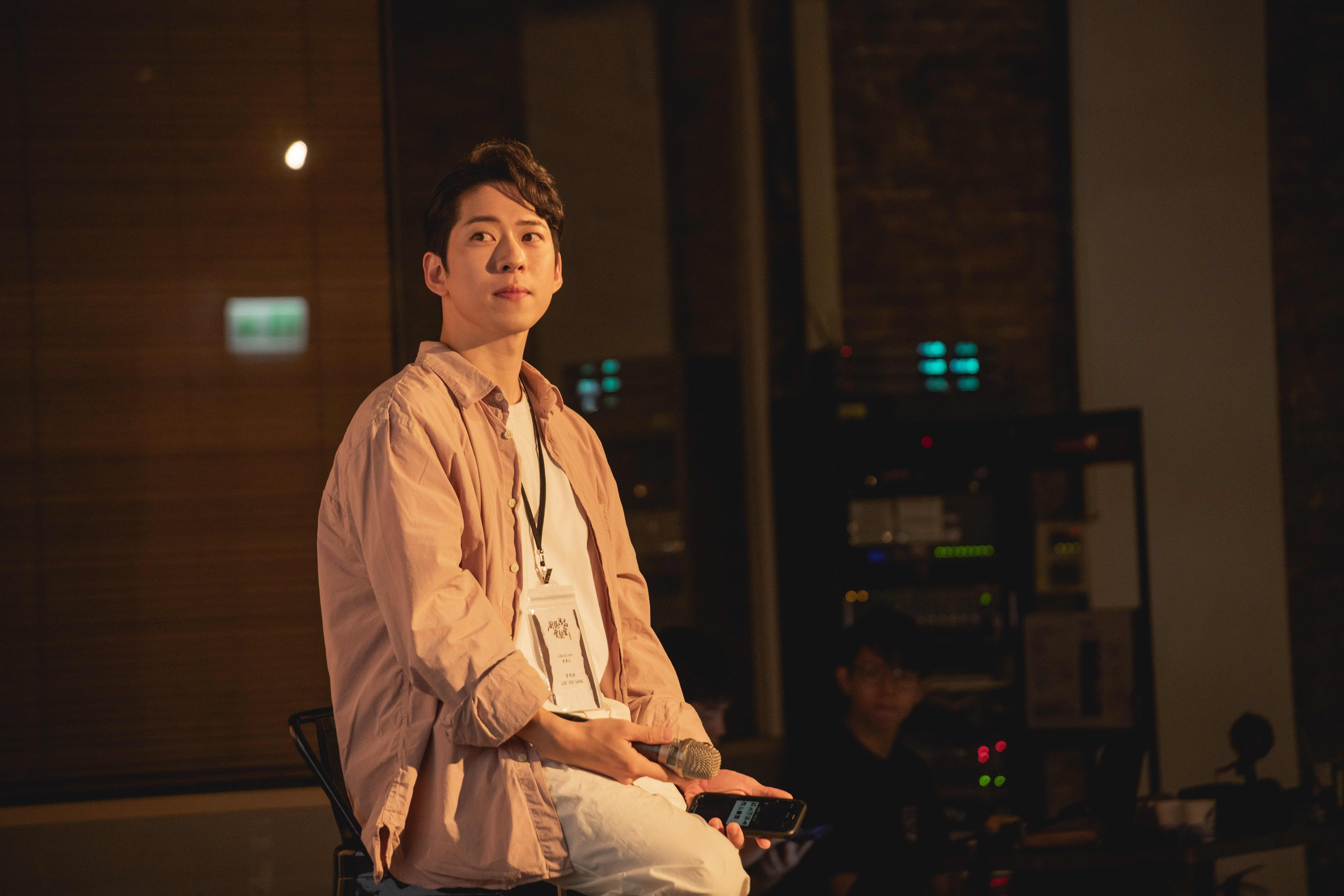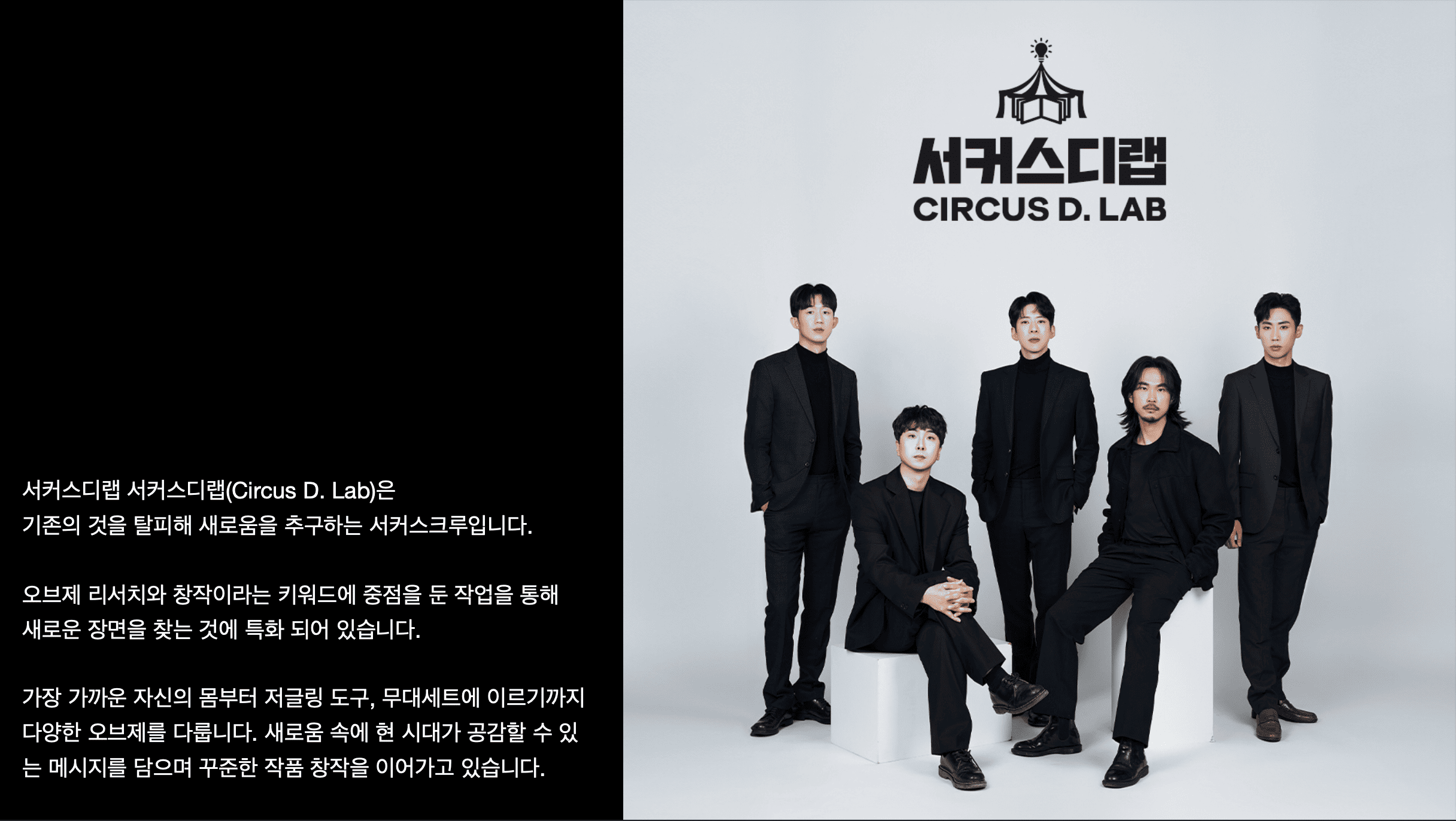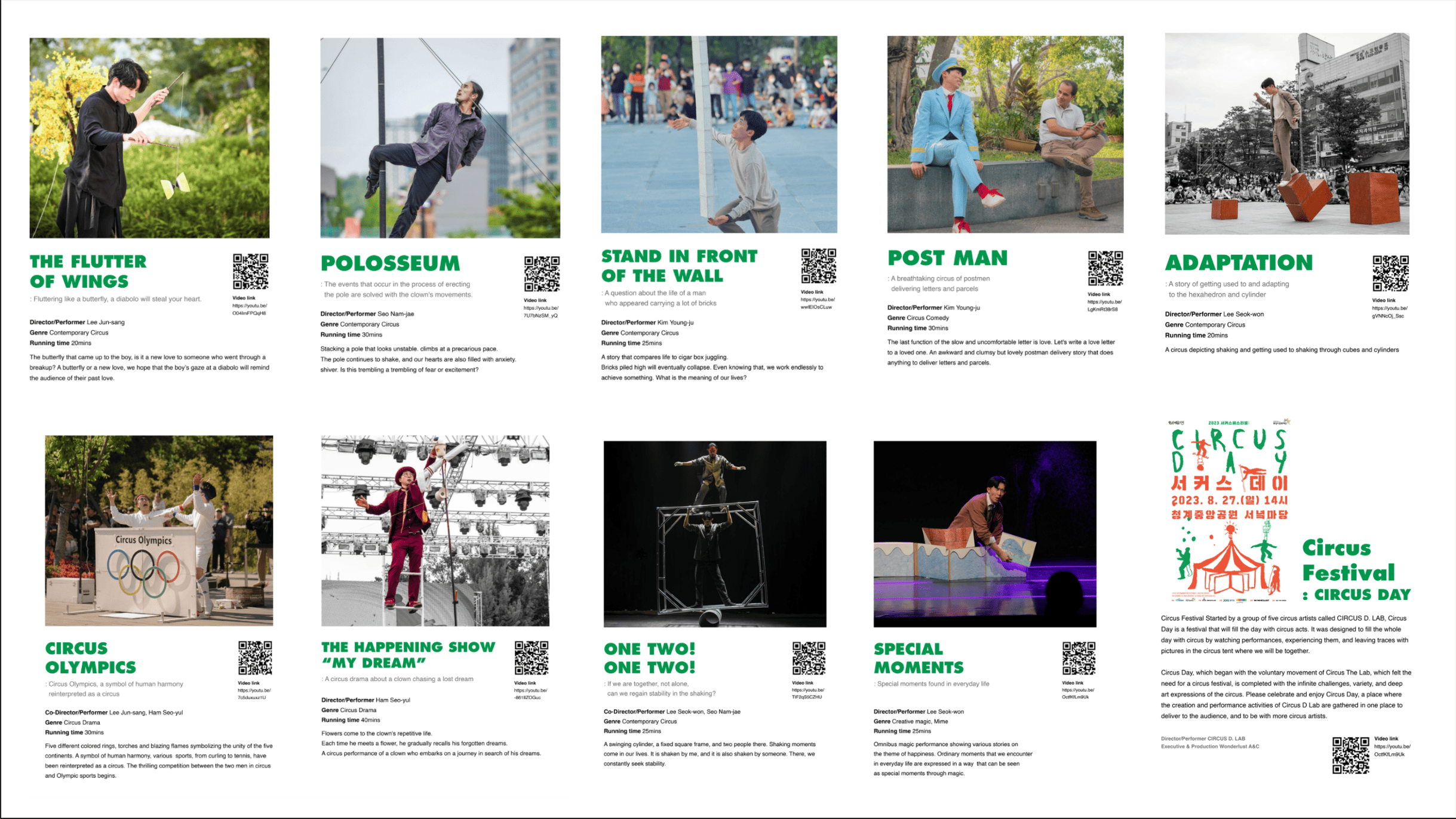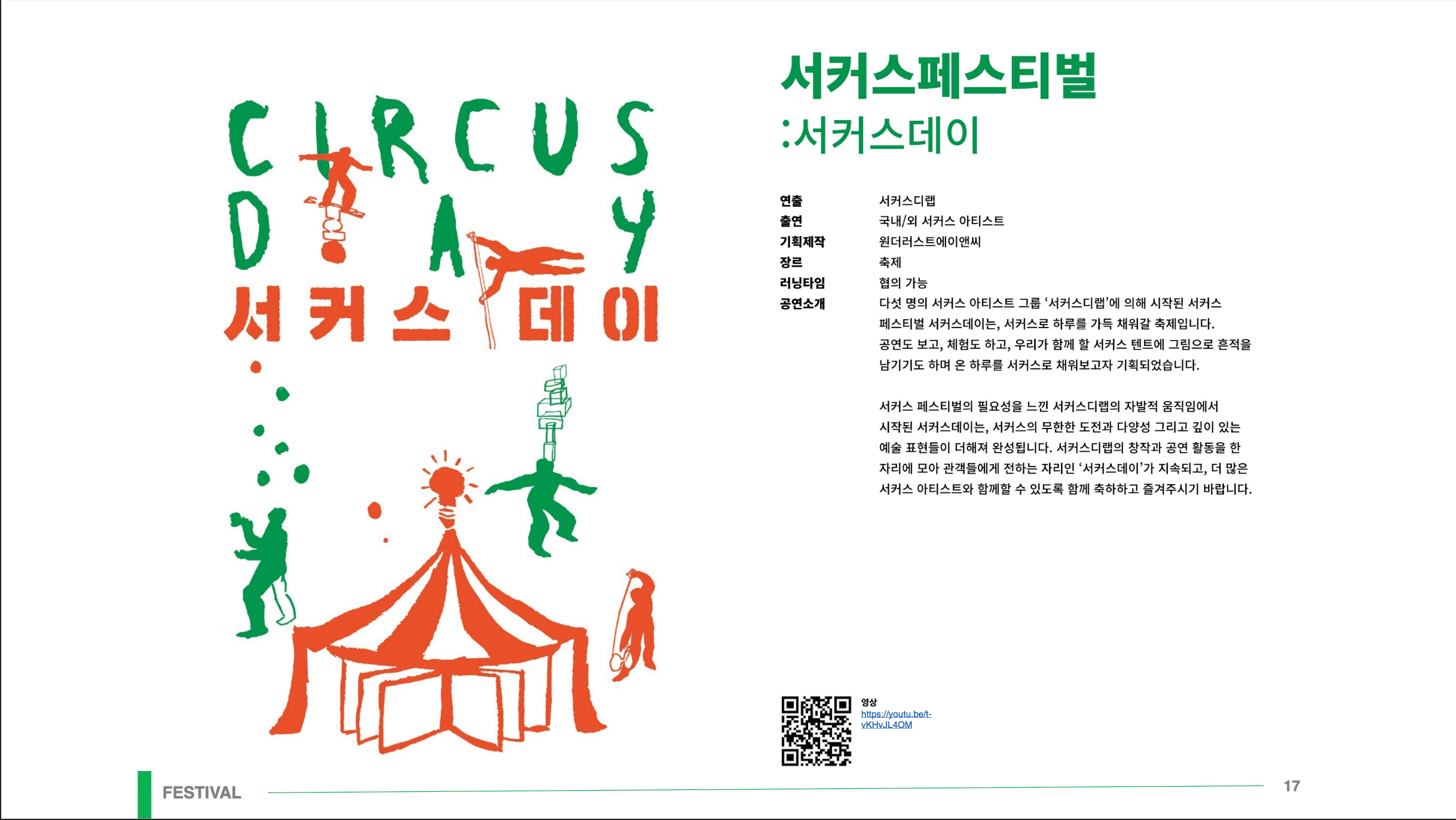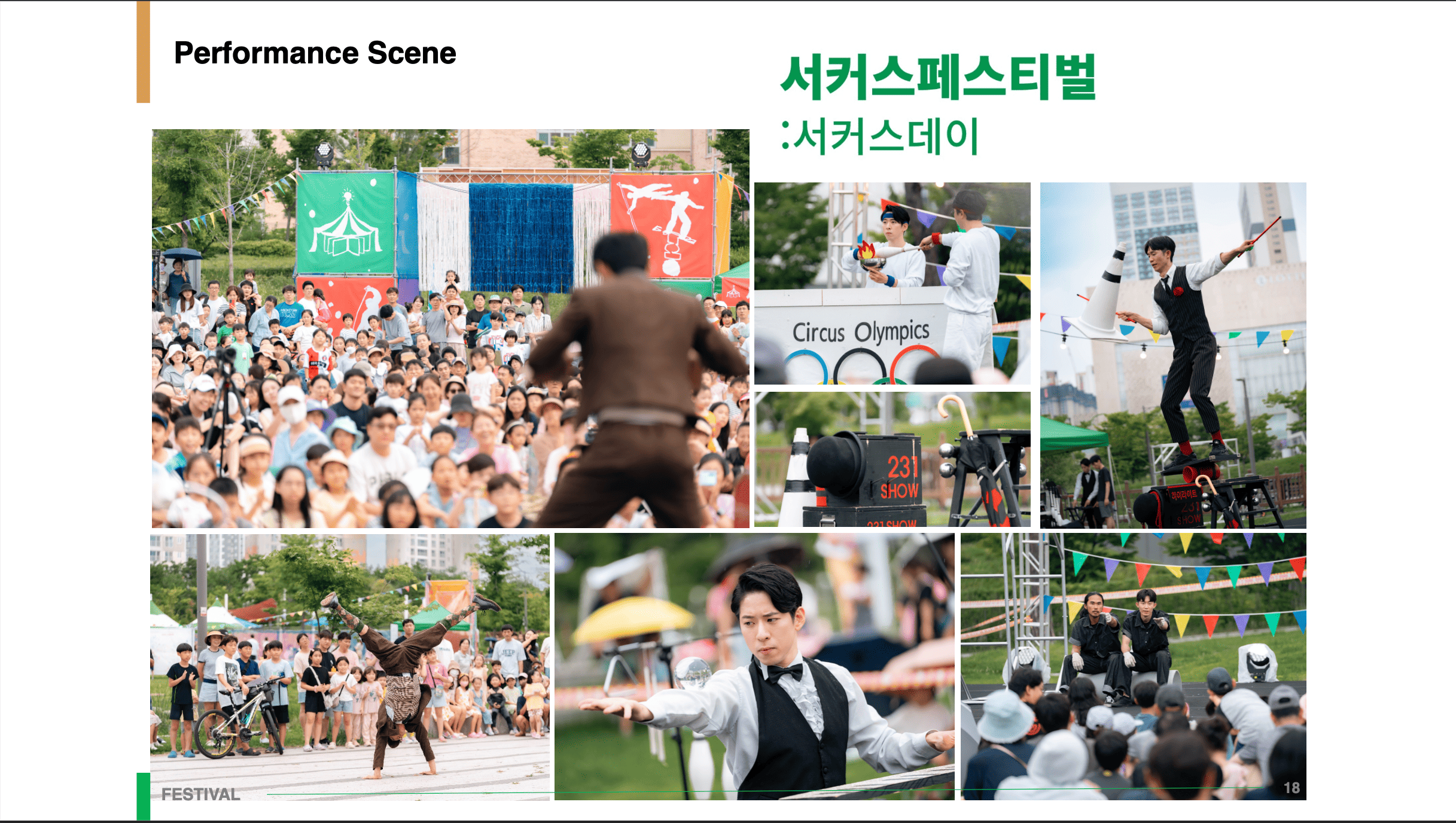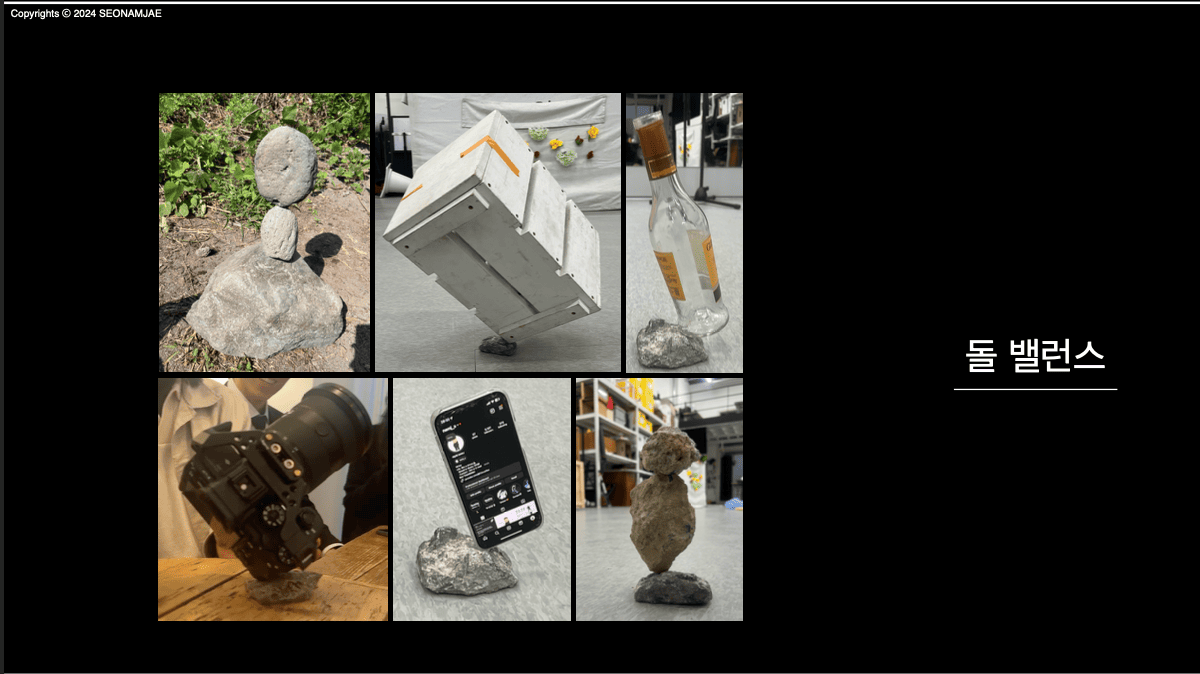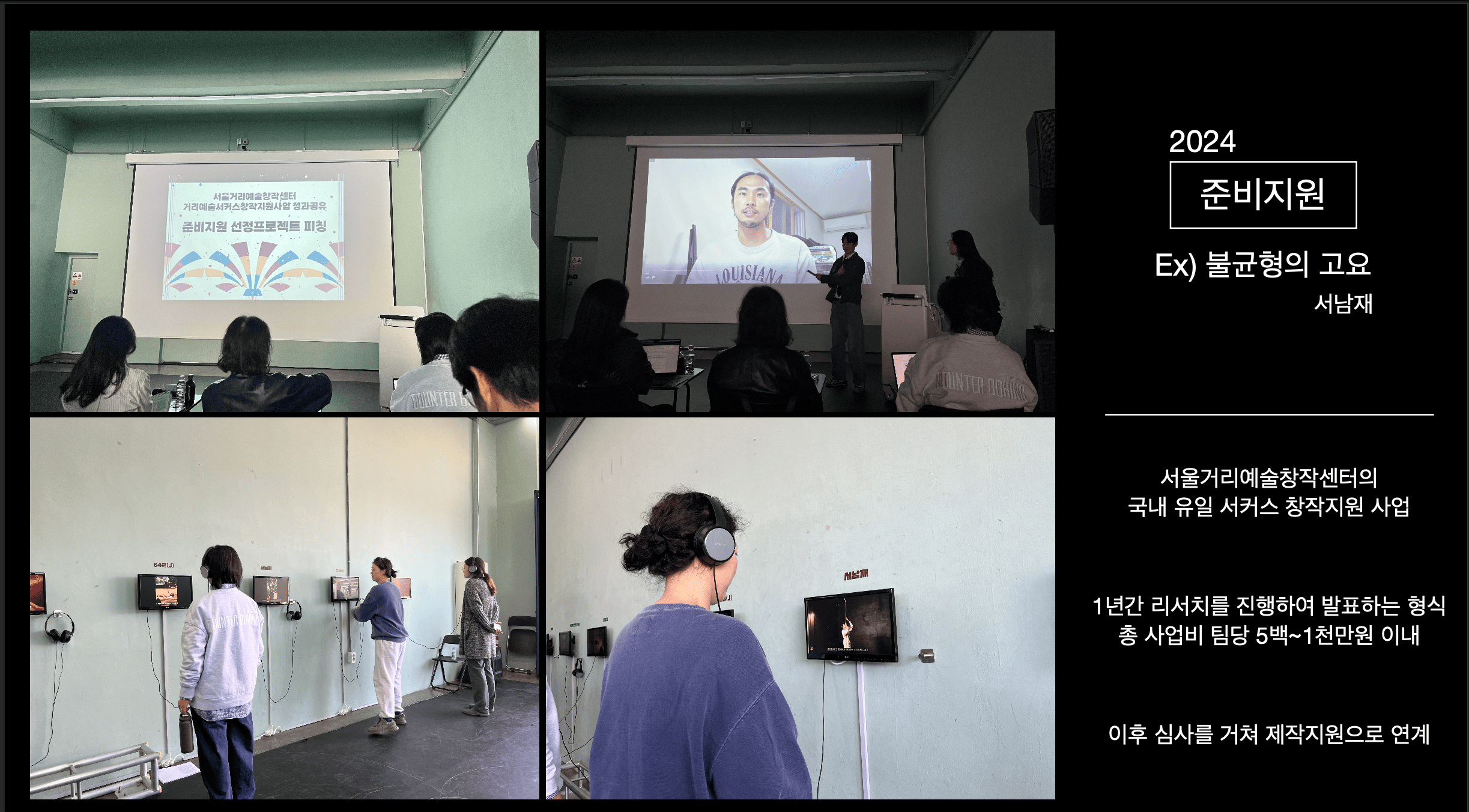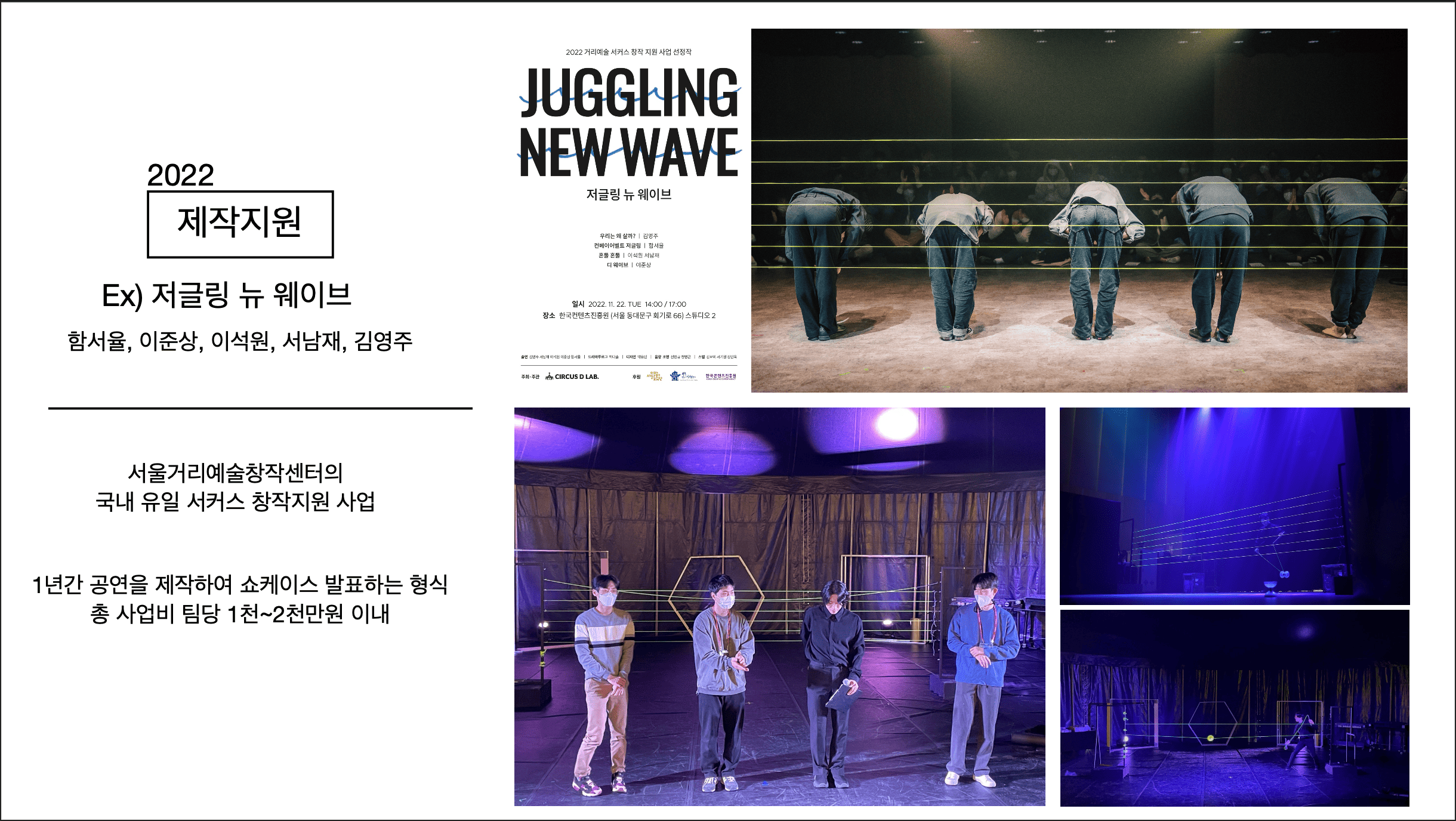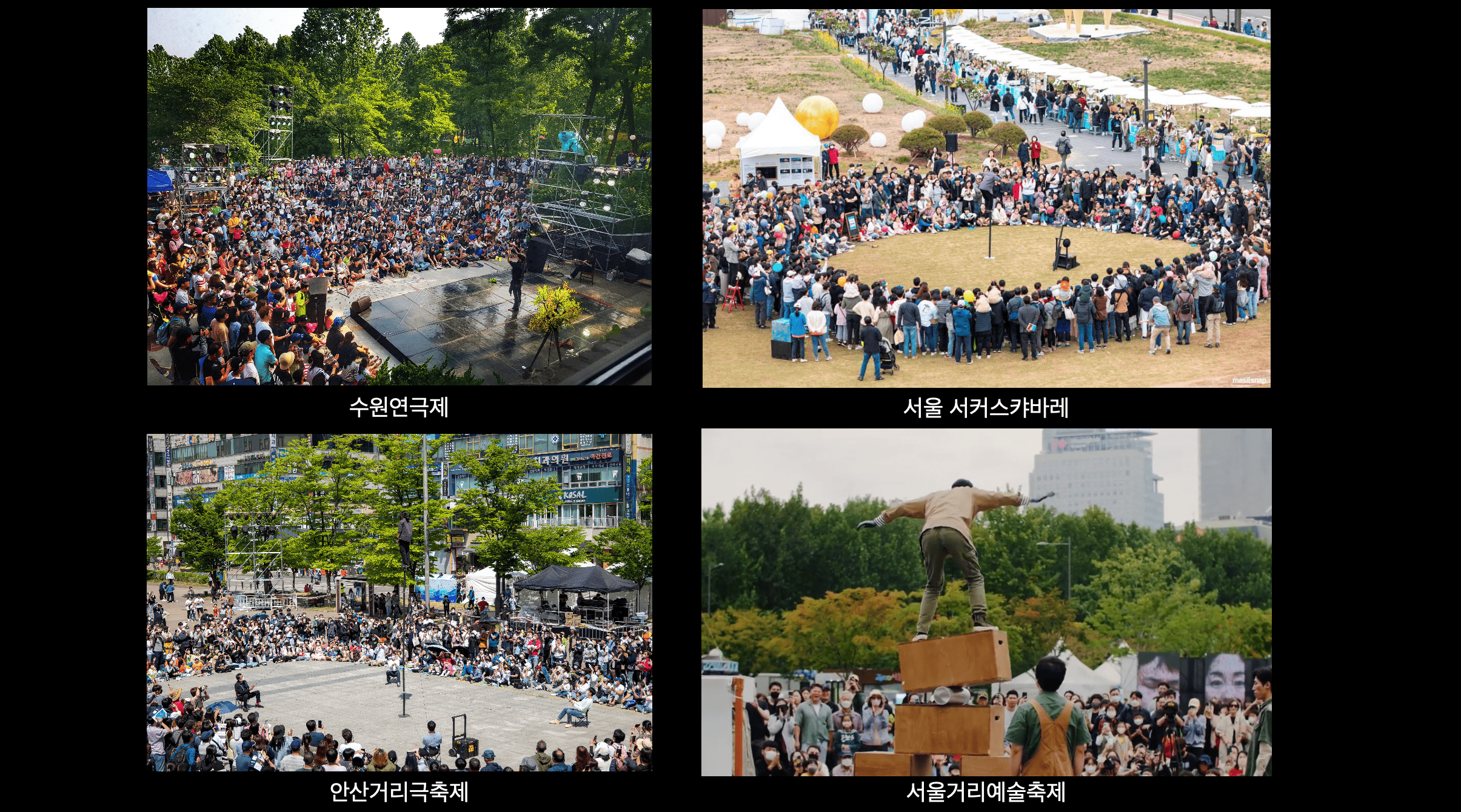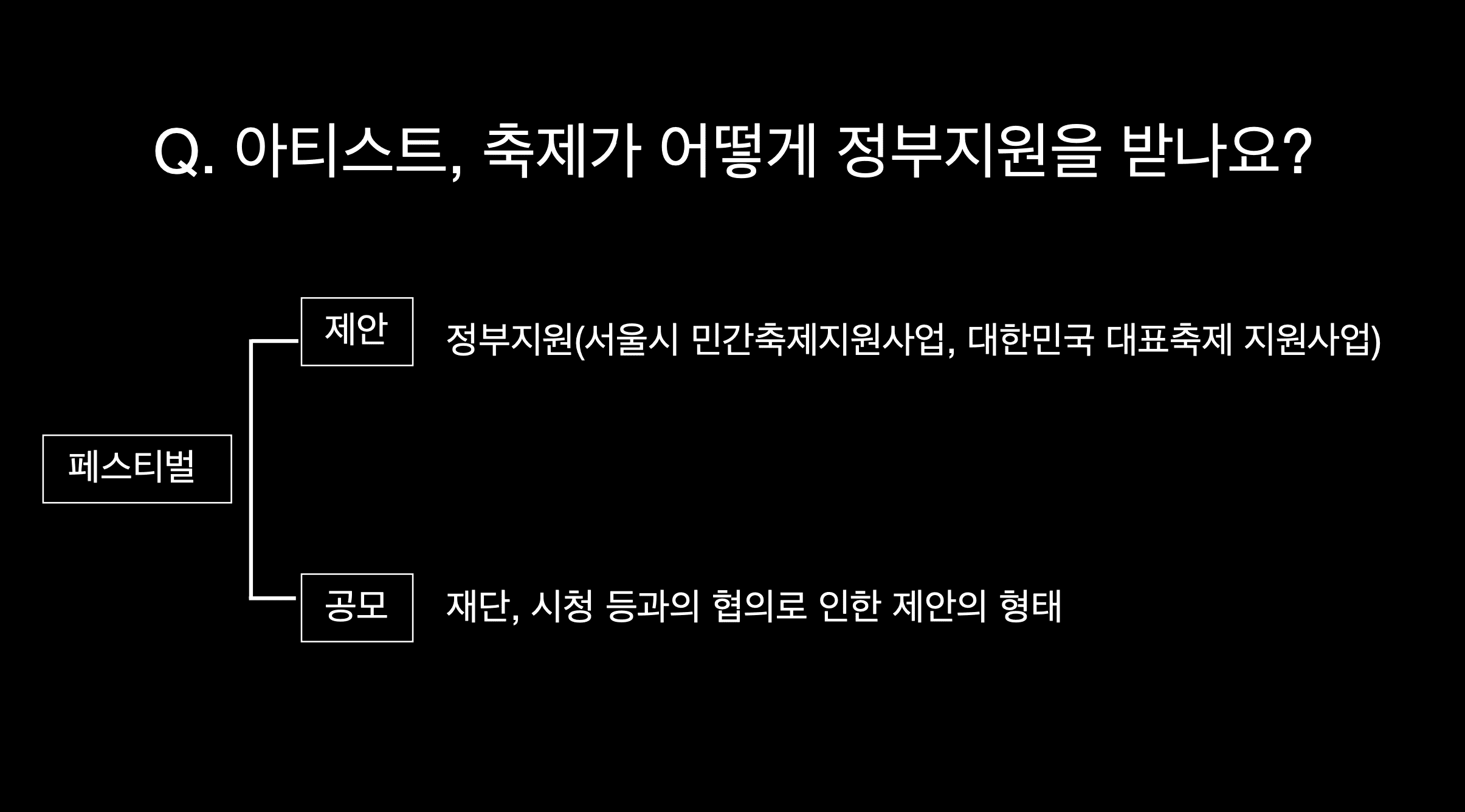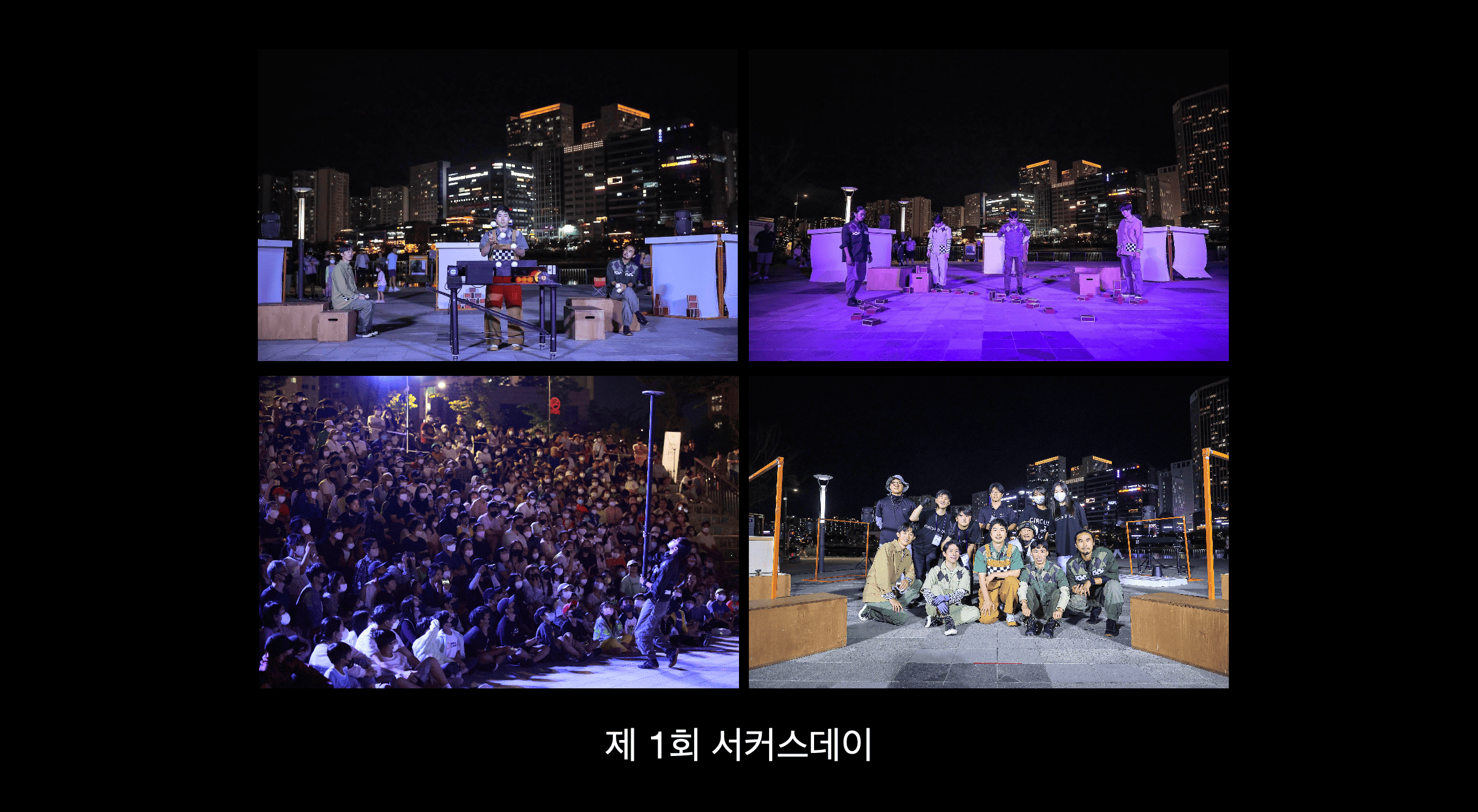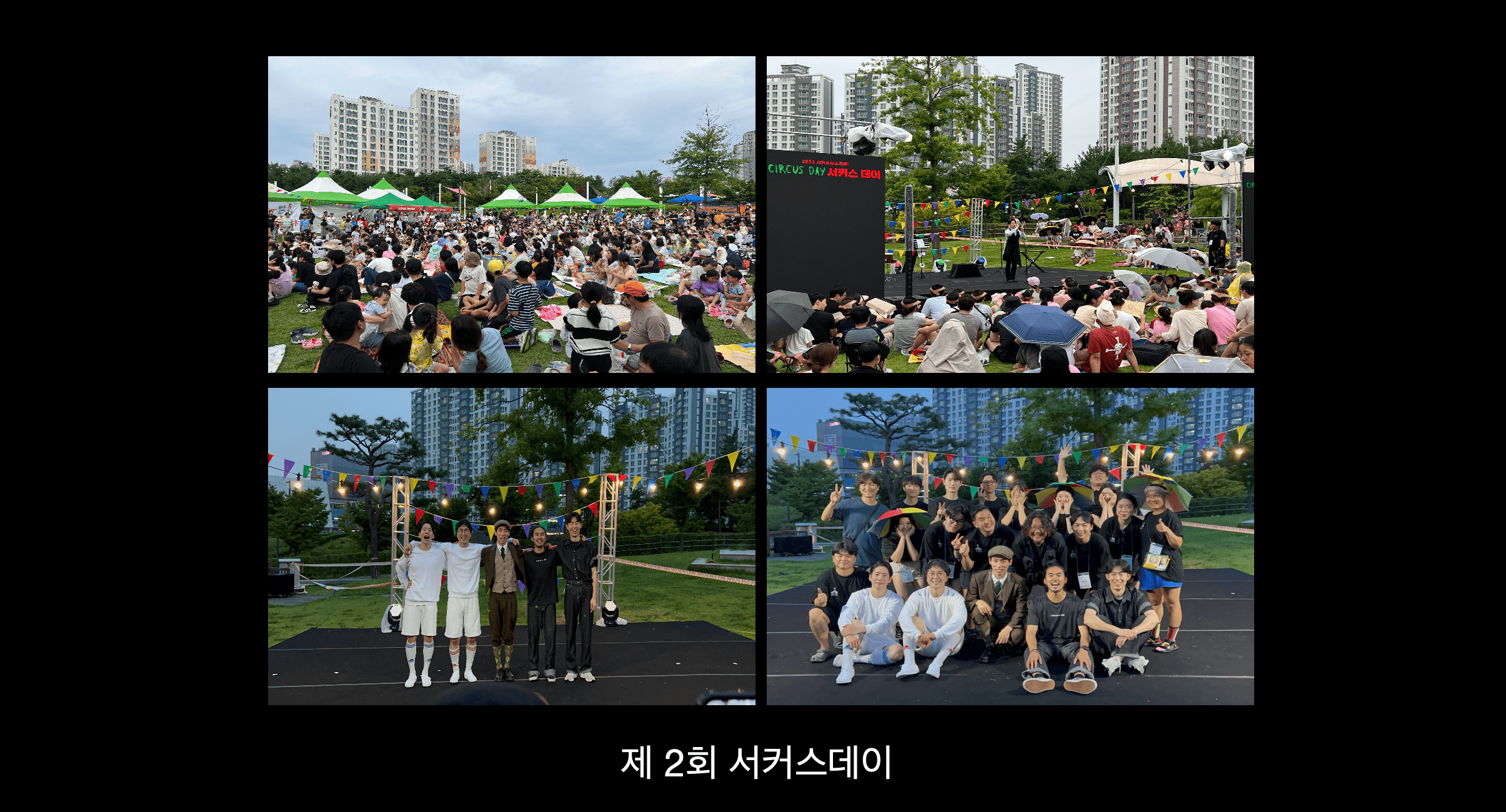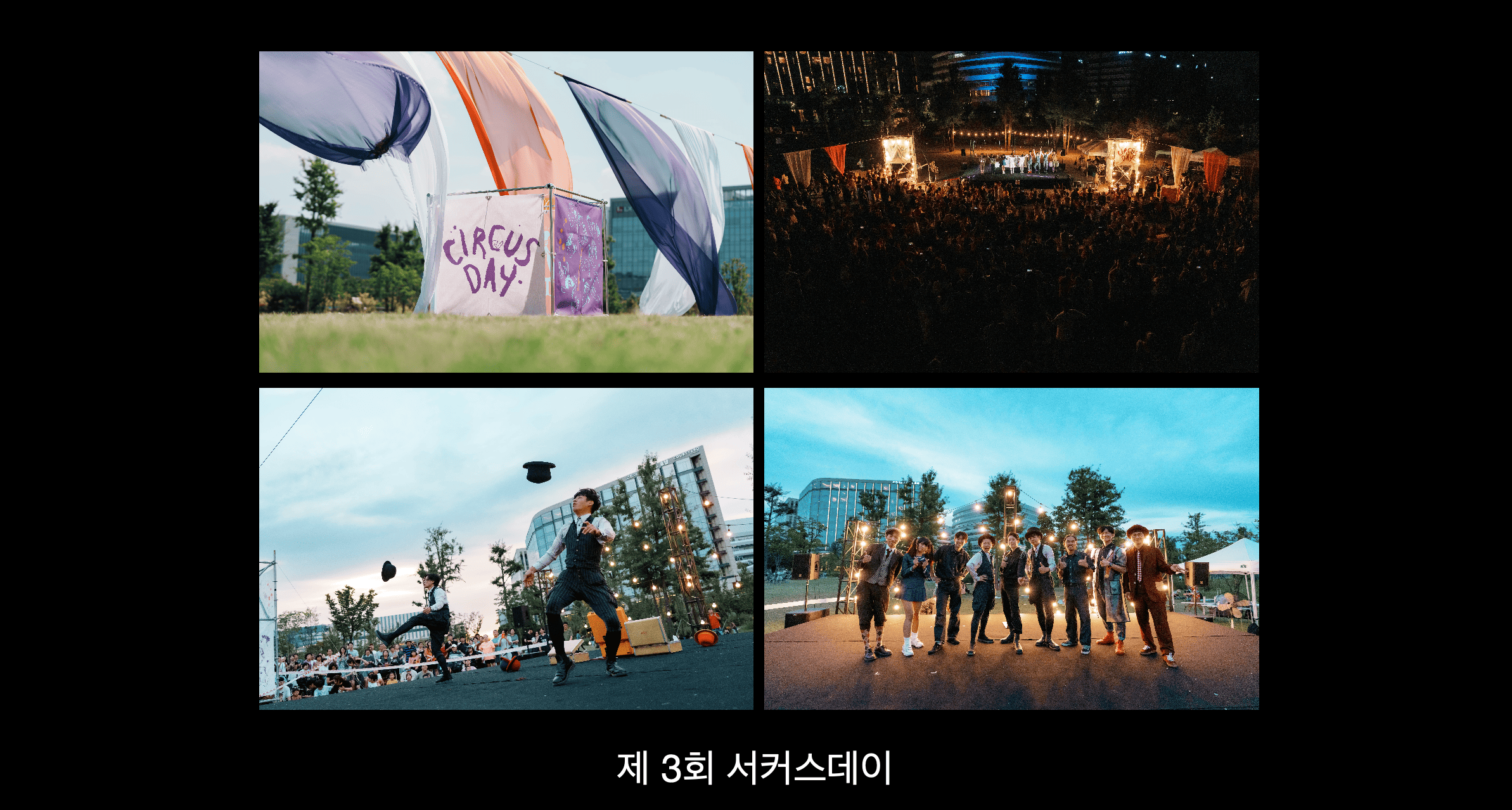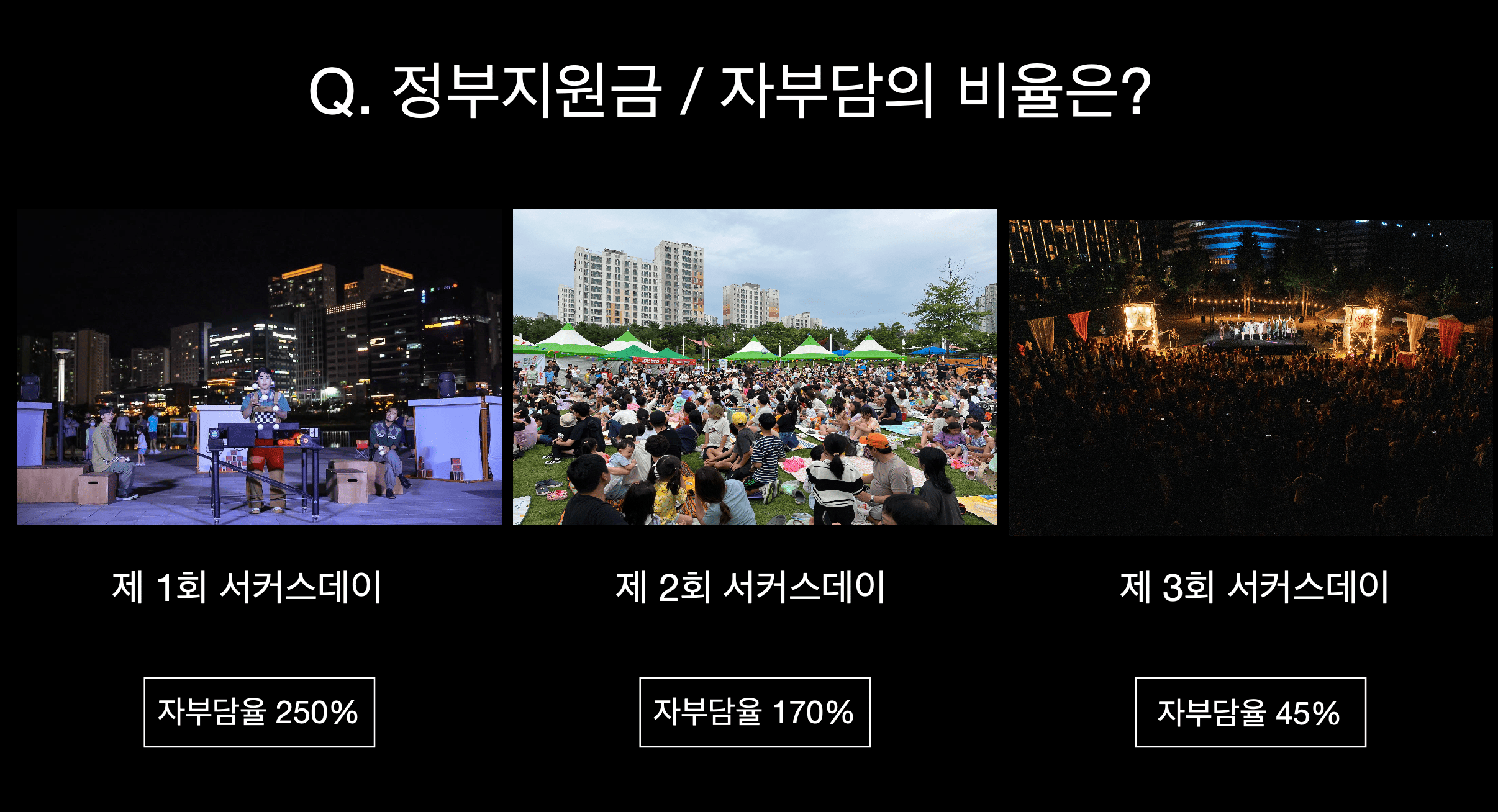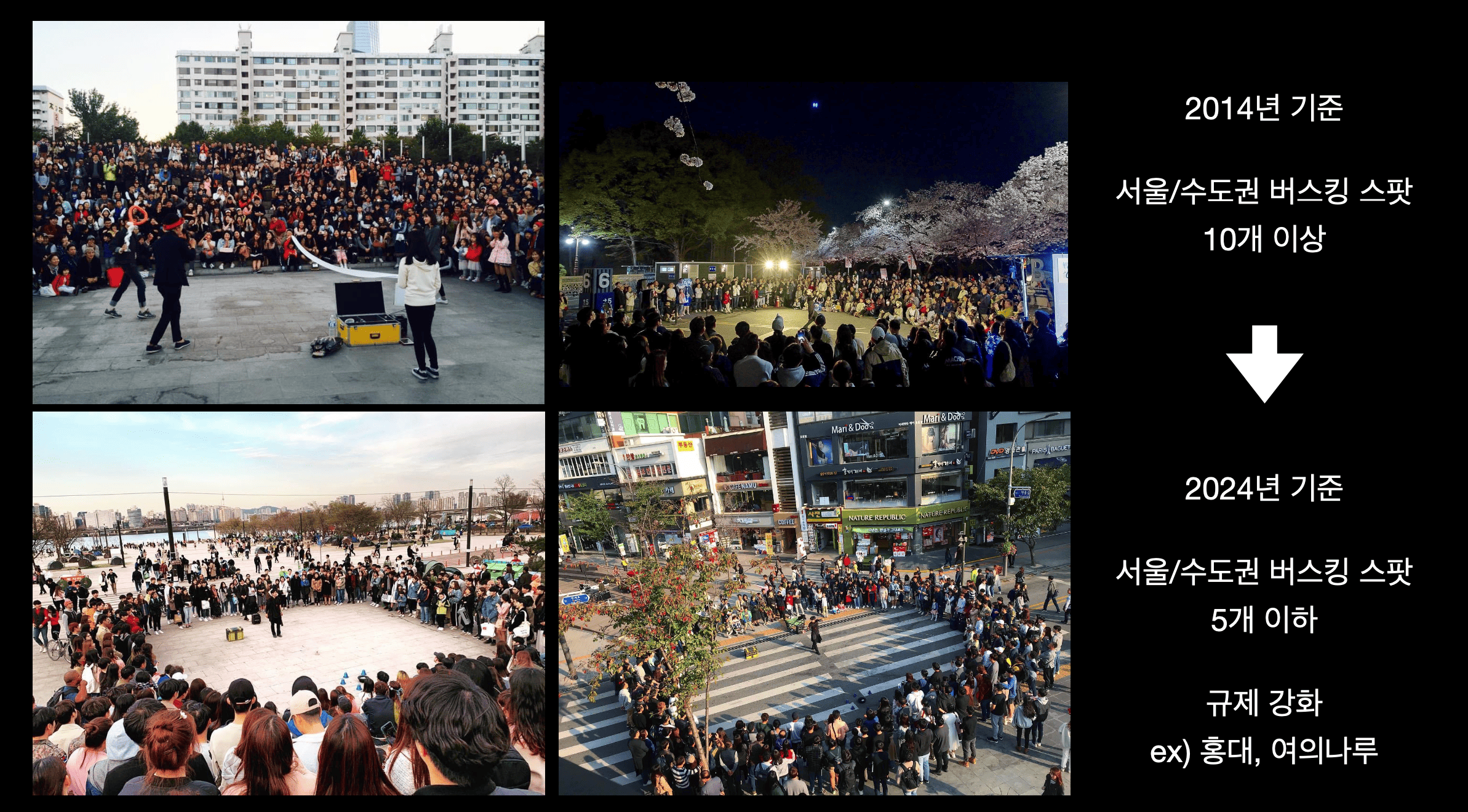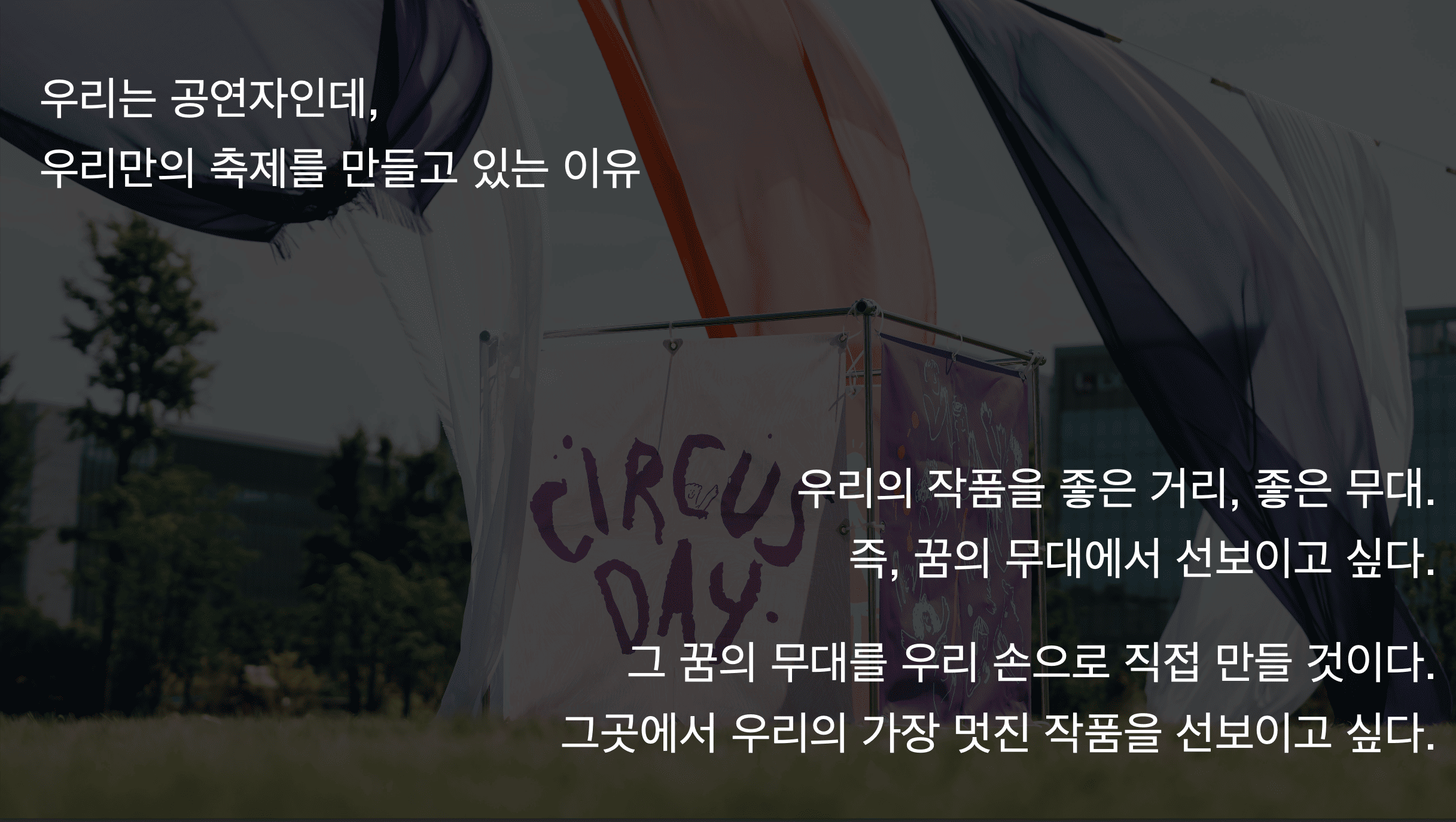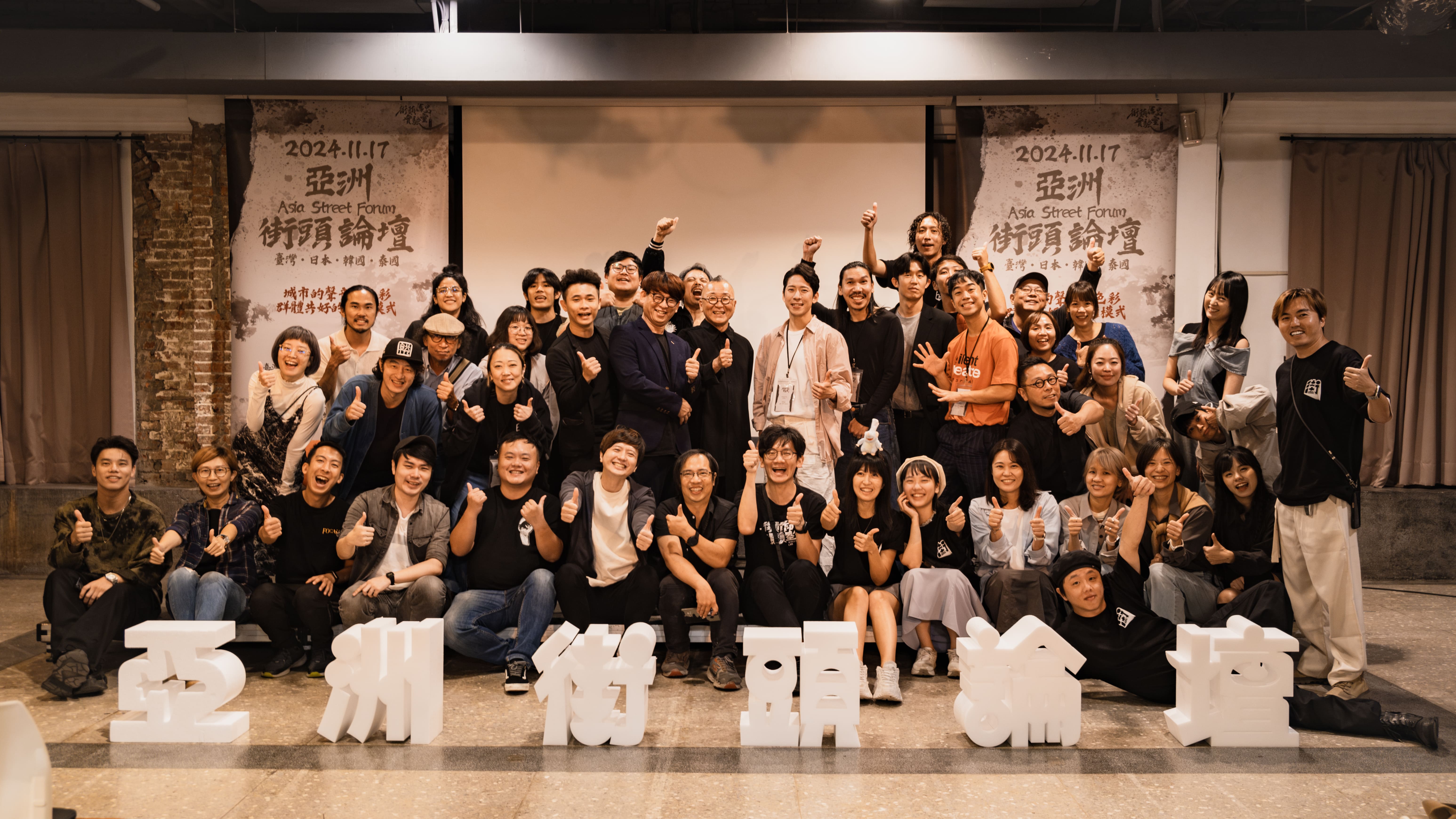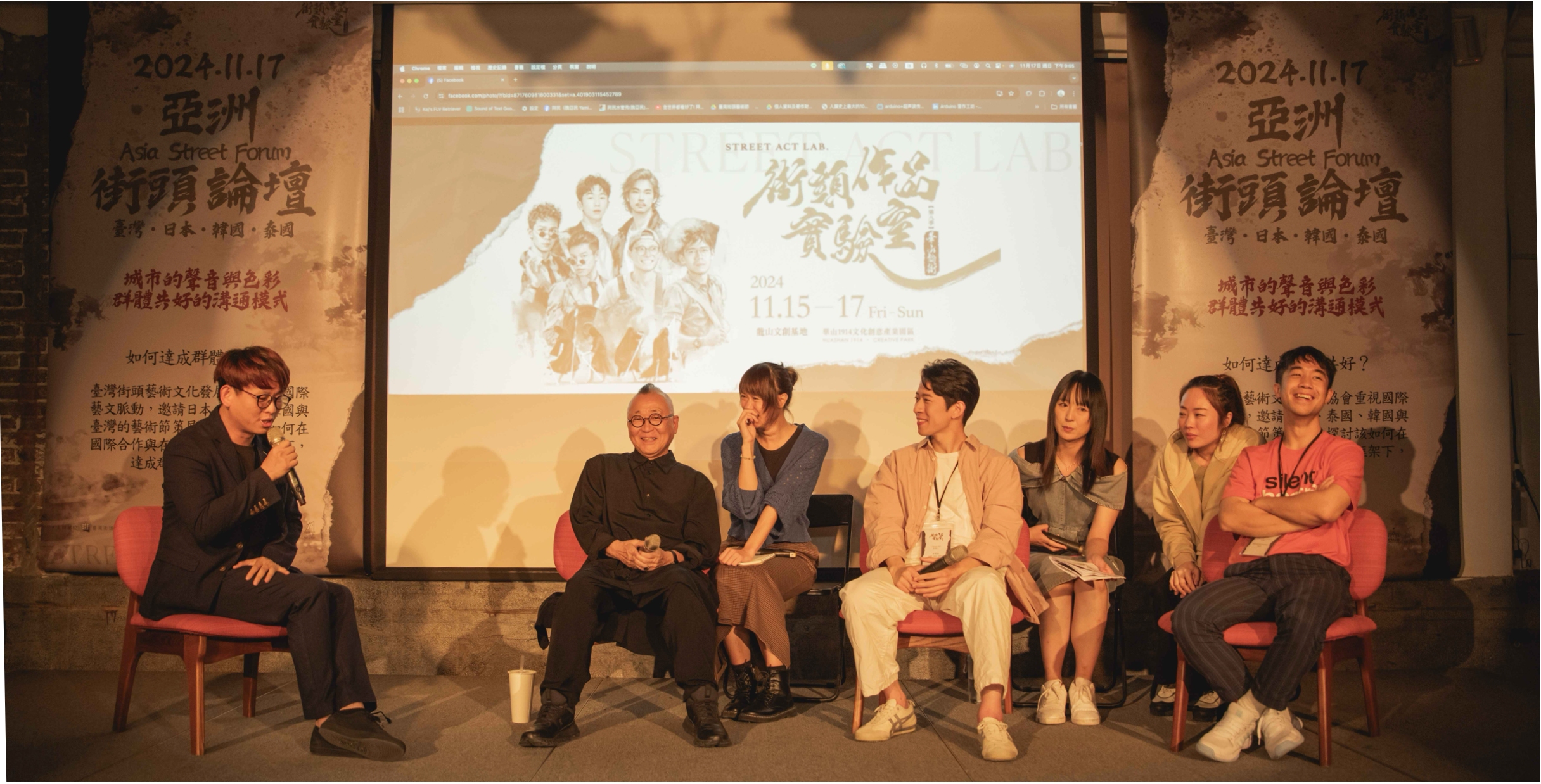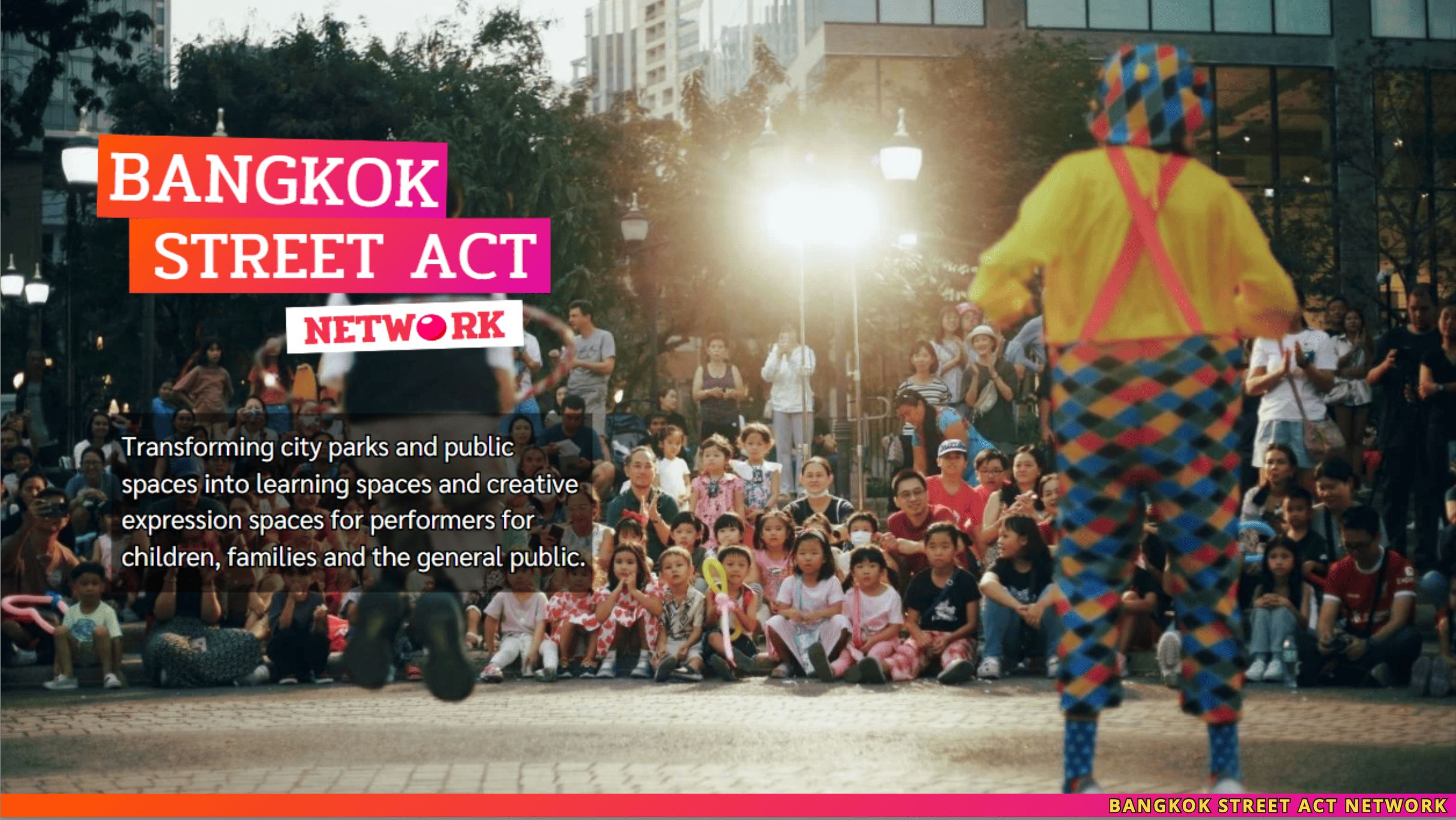How to achieve “ Sharing Good ” among groups?
Economy is the driving force for urban development, and art and culture are the foundation for shaping the soul of a city. A great city relies on economic prosperity and development, but also requires profound cultural heritage and rich artistic expression. In 2024, the association invited four Asian Art Festival curators to conduct an in-depth discussion on the communication patterns between different groups. From art activities in the streets to large-scale cultural cooperation, how these groups can make the city more prosperous through mutual exchanges and collaborations. Sounds and colors are more vivid.
Korean Delegate – 이준상 Lee Jun-Sang
Producer of Circus Day Festival
A member of Korea’s Circus D. Lab, primarily responsible for international affairs.
Skilled in diabolo and ball juggling, he has created five original solo and duo performances and actively participates in international arts festivals and Korean television programs.
Circus D. Lab Studio
Circus D. Lab is a circus studio that departs from tradition and pursues innovation through circus performances. The studio was established with the purpose of creating entirely new works for festivals.
By researching various objects, including their own bodies, juggling props, and stage designs, Circus D. Lab continuously creates works that are contemporary, innovative, and informative.
( Circus D.Lab Official Website: https://circusdlab.com/ )
Compared to group performances, the members often gather their individual works to form a series of events.
Currently, the five members of the studio have 15 works in solo, duet, and group formats, performing in the streets, community events, and art festivals.
Circus Day Festival
Inspired by a particular work in their early years, the members had the idea of organizing their own art festival. In 2021, after years of engaging in circus performances, they began to collaboratively create their own festival, “Circus Day.”
Initially, only five people were involved in organizing the festival, but now, more partners have joined, transforming it into a small-scale collective.
(Circus Day Official Instagram: https://www.instagram.com/circusday_official/)
Initially, the goal of Circus Day was to showcase the performances of the five members of the studio, allowing their original works to be seen. However, the vision soon expanded: “We hope that the audience can enjoy a full day of fascinating circus performances and experience the joy of circus arts.” This vision gradually grew into the festival we know today.
In 2024, the studio hopes to see Circus Day make its mark at international art festivals, so they have incorporated international works: two performers from Taiwan and two from Japan have been invited to participate.
They hope that Korean audiences can experience new forms of performing arts and appreciate the clown-style performances, aiming to introduce more people in Korea to the joys of circus arts.
Below is the 2024 (3rd) Circus Day highlight video:
Creative Grants from the Korean Public Sector
Korean artists can receive two types of grants during the creation process. Once the work is completed, there are three ways to circulate the work. These are based on the experience of Circus D. Lab studio, and may differ for other studios.
Let’s first explain the two types of grants that Korean artists can receive during the creation process.
(1) Preparation Stage Grant
The first type is the “Preparation Grant” that artists can receive during the development phase of their work. This grant is not limited to any specific form of performance. As long as you present your desired artistic work in writing and submit a proposal to the government, you have a chance to receive the grant.
This grant program varies by the cultural foundation in different regions, but the main requirement is to conduct research and development on the work and then present it within the year.
These photos show some of the artistic works funded by the grant that Circus D. Lab has previously received (the research theme was “balance,” and the studio members aimed to balance various objects on stones).
They believe that this grant program allows creators to express themselves freely, making it a very good opportunity. The grant amounts vary depending on the different foundations, and each artist seeking funding should first determine the amount they need, then submit a proposal.
The speaker mentioned: The advantage of this grant is that it doesn’t require tangible results or physical products. Its primary purpose is to give artists the freedom to use their imagination and express their ideas. So even if the final outcome isn’t a fully realized product, the government won’t make any complaints. The results can be presented in the form of presentations, videos, performances, and other formats.
(2) Production Stage Subsidy
The second subsidy program which is provided during the “production stage” after the development of the work has been completed.
This subsidy program allows creators one year to produce their work, and the results are presented through a showcase. Such a subsidy model is likely available in many countries, and perhaps many of you are already familiar with it. The subsidy amount will, of course, vary depending on the foundation or organization providing it.
Below is a video of the studio members who received this production stage subsidy.
Two Years of Creative Support
As mentioned earlier, these two subsidy programs can also be received in succession—first, the “preparation stage” subsidy, followed by the “production stage” subsidy. This allows artists to spend the first year brainstorming and researching their artistic themes, and in the second year, they can turn their ideas into reality. Such support enables artists to experiment freely during the first stage, while focusing on prop creation and stage design in the second stage.
Three Stages for Work Presentation
Once the work is completed, there are three different stages for presenting it.
The first stage is performing directly on the streets. The second stage involves participating in various events, such as corporate performances, regional shows, or street art festivals. The third stage is showcasing at international festivals in Korea.
Below are four photos from some of the most iconic international arts festivals in Korea. Through these large-scale festivals, the members not only have performance stages but also receive funding to continue their lives and creative work. The studio members shared: “Our main focus is turning imagination into reality, and our ideals are gradually aligning more with the public’s tastes. Performances on the streets have also become more in tune with what people enjoy.”
How to Obtain Subsidies for Organizing an Arts Festival?
(1) Korean Public Sector Subsidies for Arts Festivals
There are subsidy programs from Seoul’s private sector as well as from prominent national institutions in South Korea. They applied for these two programs with their circus performance. However, these subsidies are not exclusively for circus arts or street performances; they also need to compete with other types of arts festivals (e.g., jazz music festivals).
(2) Partnering with Foundations or Local Governments to Co-propose Projects
In the first year of organizing the Circus Day festival, Circus D. Lab did not receive significant subsidies and was unable to hold the event in Seoul government. As a result, they hosted it in Hanam City, located on the outskirts of the capital region. The location in the second year was different from the first, as this year’s festival was funded through crowdfunding. Finally, in the third year, they were able to secure a subsidy from the City of Seoul. (See the three sets of photos below.)
Funding and Subsidy Proportions for Organizing an Festival
Based on their experiences over the years, there have been several new government subsidy programs.
The association inquired about the funding ratio when organizing an festival. When government subsidies are low, the proportion of self-raised funds increases. Although public sector subsidies have grown, most subsidy programs still require that self-raised funds make up at least 10% of the total budget.
If the festival has ticket sales revenue, the proportion of self-raised funds will be even higher.
When they first started Circus Day festival, they had no prior knowledge, so the self-funded ratio in the first year was 250%. In the second year, it was 170%, and by the third year, it dropped to 45%. So, it can be said that the studio did not make any profit from the festival at all.
Future Aspirations
Organizing Their Own Arts Festival
Even though they didn’t make any profit, the reason why Circus D. Lab is so determined to host their own arts festival is because they want to realize their own free will.
They hope that every detail of the festival will be decided according to their own vision, including audience interaction, which is a very precious part of their work. What makes circus performances so interesting is the affirmation they receive from the audience. Over these three years, they have met many audience members and have brought more exciting and creative ideas to Korea.
Performance Environment
In Korea, there used to be many places where street performances could take place, but due to the impact of COVID-19, the number of available performance venues has become very limited.
Despite the ongoing restrictions, they have continued to negotiate with the government to maintain a few spaces where street performances are still allowed. The most famous of these is Hongdae in Seoul. They hope to continue their dialogue with the government to secure more permission for street performance venues.
The five team members have also gone through a period where they could only perform on the streets.
At that time, they dreamed of performing on big stages around the world. Over the years, they’ve participated in the Edinburgh Fringe Festival, the Shizuoka Daidogei World Cup in Japan, and they hope that street performances in Korea could have similar international platforms.
They have a vision: they want to have a large audience enjoying high-quality performances in a good environment.
Performing on such impressive stages has given the team a strong creative drive and has become the catalyst for their desire to organize their own high-quality arts festival. They hope to showcase their own works at their self-organized festival and collaborate with more international artists.
Lastly, Circus D. Lab has some words they would like to share with their international partners.
We’ll use this page to tell everyone :
“As performers, we have a strong reason for insisting on organizing our own festival:
We want our work to be presented to the audience in the best streets and on the best stages.
In other words, we want to perform on the stage of our dreams.
And this dream stage must be built by our own hands.
We want to showcase our best works here.”
2024 Asia Street Forum – The Sound and Colors of the City
Organizers|Taiwan Street Arts and Culture Development Association
Co-organizers|Department of Cultural Affairs, Taipei City Government, Huashan 1914 Creative Park
Host|Moyo Lin 林興昱
Panelists|Japan – Masaaki Koga 甲賀雅章 / Korea – Lee Jun-Sang 이준상 / Thailand – กฤษณ์ สงวนปิยะพันธ์ Louis
Chief Planner|Hsu Kai-Hsuan 徐開炫
Visual Design|Moyo Lin 林興昱
Photographers|Chang Chen-Lin, Koukos Yang
Interpreters|Japanese – Sasa / Korean – Saleisha / Thai – Ting Lu
Transcription|Hsu Kai-Hsuan 徐開炫
Writer|Hsu Kai-Hsuan 徐開炫



